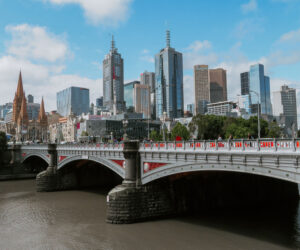RMIT University study finds The Cape a scalable blueprint for housing estates
As concerns about climate change and the environment achieve top billing as the greatest issue of concern for Australians, The Cape sustainable housing estate in Victoria’s Bass Coast has been working to demonstrate how Australian housing estates can build better energy efficient housing and achieve a zero emissions, low cost future.
A 12-month independent study by RMIT University and analysis by leading not-for-profit RENEW has now put the spotlight on The Cape as a scalable blueprint for how the Australian housing industry can build affordable, energy efficient, carbon neutral homes that dramatically reduce energy bills, with consumers, the economy and the environment set to benefit.
The study has confirmed that The Cape has successfully combined passive solar design and construction techniques with off the shelf, affordable technologies such as heat-pump heating, cooling and hot water systems, and solar power, to achieve carbon neutral, healthy homes that are comfortable, resilient and healthy in hot spells and heat waves, with super low running costs compared to conventional homes.
The Cape is also generating three – four times the energy it is using, demonstrating how new “energy positive” estates can become power stations in our suburbs, generating a surplus of clean energy for use on site, to help power electric vehicles, and to export to surrounding neighbourhoods and improving energy security.
The RMIT study, with data analysis by RENEW, monitors thermal performance, energy use and running costs across a sample of 14 of the first 40 homes to be built at The Cape estate, and has highlighted the value of a range of unique benchmarks being achieved at The Cape, including:
-
Cape homes are achieving a very high level of energy efficiency, averaging over eight stars on the NatHERS energy efficiency rating across the estate, a national first. This is achieved through passive solar design and construction principles, including optimal orientation, double glazing, shading, insulation and thermal mass. Thermal monitoring of the homes through winter and summer has demonstrated that the homes are sitting in a very stable and comfortable year-round temperature band of 18 – 25° with minimal heating and cooling required, even when external temperatures are extreme such as during heatwaves
-
The Cape estate has replaced gas, an increasingly expensive fossil fuel, with efficient all-electric heat pump heating and cooling systems such as Daikin seven-star split systems, heat-pump hot water systems such as Sanden heat pumps, and high performance induction cooktops. This combination of appliances allows homes and the estate to achieve sustainable, carbon neutral, gas free operations, eliminating gas bills altogether including connection and usage fees, as well as the cost to install gas plumbing and gas appliances within the homes. The increasing economic and environmental benefits of gas free houses and estates have been extensively modelled by RENEW and The Cape has proven on-scale that there is no economic or performance reason for new homes to use gas over an efficient all electric home
-
The combination of passive solar construction and energy efficient all-electric fitout has resulted in Cape houses achieving an enormous 88 per cent reduction in grid energy use compared to a standard new six-star gas/electric home built today on a standard housing estate. Cape homes are using an average of 5.2kWh/day of electricity, and no gas usage. This is about one-tenth of the energy grid usage of an average Victorian home, which consumes around 4400kWh of electricity per year along with 40 gigajoules (approx. 11100kWh) of mains gas
-
This has been achieved with costs to build the higher performance homes as The Cape, including fitting out the homes with leading energy efficient operating systems, of circa $2200 per-square-meter, in line with industry standards
- The homes and estate are generating a large surplus of clean solar energy, generating three – four times as much energy as they are using, showcasing the potential for new highly sustainable estates to become “power stations” – to generate clean renewable energy to the grid and surrounding older suburbs at times when it is needed, such as during heatwaves, and to help with energy security in areas prone to brownouts and grid outages
-
Cape houses are achieving household energy bills that are a fraction of the national average, with most homes achieving annual energy bills well under $500 per annum, compared to the $2500 and above in conventional estates, and many Cape homes are achieving zero energy bills, as well as energy bills in credit in lieu of the solar surplus being supplied back to the electricity grid. This has been achieved without premium feed-in tariff rates
-
Cape homes are operationally carbon positive, achieving reductions of annual CO2 production of more than eight tonnes per annum, when compared to a typical Victorian home.
The Cape was formally recognised for its national leadership in sustainable housing through the 2018 national Urban Developer Industry Leadership Award.



